What is the ASME?
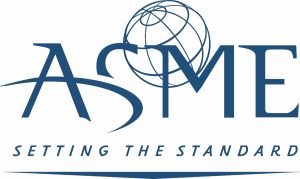
The ASME stands for the American Society of Mechanical Engineers. Founded in 1880, ASME has grown into a globally recognized, non-profit professional organization. Its history is deeply intertwined with the advancement of mechanical engineering and the Industrial Revolution. Over the decades, ASME has played a pivotal role in developing standards and codes that promote safety and efficiency across a wide range of industries. The organization’s impact extends far beyond the United States. Its standards are adopted and referenced worldwide, making it a global force for engineering excellence.
ASME’s mission is to serve diverse communities by advancing, disseminating, and applying engineering knowledge to improve the quality of life and communicate the excitement of engineering. They accomplish this through conferences, publications, professional development courses, and, most notably, through the development and maintenance of consensus-based codes and standards like the BPVC. These codes and standards are not simply recommendations; they represent the collective knowledge and experience of industry experts, continually refined to reflect the latest research and best practices. They strive for safety, reliability, and standardization in engineering practices across the globe.
Key Sections of the ASME Boiler and Pressure Vessel Code (BPVC)
The ASME Boiler and Pressure Vessel Code (BPVC) is a massive document, encompassing numerous sections that address different aspects of boiler and pressure vessel construction. Understanding the organization of the BPVC is crucial for anyone involved in the design, fabrication, inspection, or operation of these systems. Each section focuses on specific components, materials, or methods. While the entire code is important, for the purpose of understanding pressure vessels, we will focus mainly on Section VIII, Division 1.
Section VIII, Division 1: Rules for Construction of Pressure Vessels
This section is the most frequently referenced portion of the BPVC concerning pressure vessels. It provides comprehensive rules for the design, fabrication, inspection, and testing of pressure vessels operating at internal or external pressures. It establishes requirements for materials, design, fabrication, examination, inspection, and testing. This includes details such as:
- Material Selection: Specifying acceptable materials based on their strength, weldability, and corrosion resistance. These materials are thoroughly tested and documented to ensure they meet the stringent requirements of the code.
- Design Calculations: Providing formulas and guidelines for calculating the required thickness of vessel walls and other components to withstand the anticipated pressure and loads. This ensures that the vessel has adequate structural integrity to operate safely.
- Welding Requirements: Detailing the procedures for welding pressure vessel components, including the qualification of welders and the use of specific welding processes. Welding is a critical aspect of pressure vessel fabrication, and the ASME code ensures that welds are strong and free from defects.
- Non-Destructive Examination (NDE): Outlining the methods for inspecting welds and other components to detect flaws or imperfections. NDE techniques, such as radiographic testing (RT), ultrasonic testing (UT), and magnetic particle testing (MT), are used to ensure the quality and integrity of the vessel.
- Pressure Testing: Pressure vessels are required to be hydrostatically tested at a specified pressure before being put into service. This verifies the vessel’s ability to withstand the design pressure and identifies any leaks or weaknesses.
Other Relevant Sections
While Section VIII, Division 1 is paramount, other sections of the BPVC provide essential information related to pressure vessels:
- Section II: Materials: Specifies the properties, manufacturing methods, and allowable stresses for various materials used in boiler and pressure vessel construction, including steel, stainless steel, and non-ferrous alloys.
- Section V: Non-destructive Examination: Provides detailed procedures and acceptance criteria for various NDE methods, such as radiography, ultrasonics, and liquid penetrant testing. This section is crucial for ensuring the quality and integrity of welds and other critical components.
- Section IX: Welding and Brazing Qualifications: Establishes the requirements for qualifying welding and brazing procedures, as well as the welders and brazers who perform these processes. This ensures that welds and brazes are performed to the required standards.
- Section X: Fiber-Reinforced Plastic Pressure Vessels: Provides rules for constructing pressure vessels made from fiber-reinforced plastic materials.
- Section XII: Rules for Construction and Continued Service of Transport Tanks: Provides requirements for the design, fabrication, inspection, and testing of transport tanks used for the transportation of compressed gases, liquids, and other hazardous materials.
Emphasis on Safety and Quality Assurance
Throughout all sections of the BPVC, a strong emphasis is placed on safety and quality assurance. The code mandates rigorous inspection and testing procedures at every stage of the manufacturing process, from material selection to final pressure testing. It also requires manufacturers to implement comprehensive quality control programs to ensure their products meet the highest standards. By adhering to the ASME Code, manufacturers can demonstrate their commitment to safety and provide customers with pressure vessels that are reliable, durable, and fit for their intended purpose.
Why is the ASME Code Important?

The importance of the ASME Code for Pressure Vessels cannot be overstated. It is a cornerstone of safety, reliability, and regulatory compliance in numerous industries worldwide. By adhering to the ASME Code, companies can minimize the risk of accidents, protect their workers, and ensure the long-term operational integrity of their pressure vessel systems. Here’s a closer look at the key reasons why the ASME Code is so important:
Ensuring Safety and Preventing Accidents
Safety is, without a doubt, the primary concern when dealing with pressure vessels. The ASME Code is designed to minimize the risk of catastrophic failures that could lead to explosions, leaks, and serious injuries. It achieves this by specifying rigorous design requirements, material standards, fabrication procedures, and inspection methods. By adhering to these requirements, manufacturers can ensure that pressure vessels are capable of withstanding the anticipated pressures and loads without compromising safety. The code also addresses potential hazards such as corrosion, fatigue, and brittle fracture, providing guidelines for preventing these failures. The goal is to create a safe working environment and protect personnel from harm.
Enhancing Reliability and Extending Service Life
Beyond immediate safety concerns, the ASME Code also contributes to the long-term reliability and durability of pressure vessels. By specifying high-quality materials and demanding stringent manufacturing processes, the code helps to ensure that pressure vessels can withstand the rigors of continuous operation for many years. This, in turn, reduces the likelihood of unexpected breakdowns and costly repairs. The code also includes provisions for periodic inspection and maintenance, which help to identify and address potential problems before they escalate into major failures. The combined effect of these measures is to extend the service life of pressure vessels and maximize their return on investment.
Meeting Regulatory Requirements and Legal Obligations
In many jurisdictions worldwide, compliance with the ASME Code is legally mandated or strongly recommended. Government agencies and regulatory bodies often reference the ASME Code as a basis for their regulations concerning the design, fabrication, and operation of pressure vessels. By adhering to the ASME Code, companies can demonstrate their compliance with these regulations and avoid potential penalties. Moreover, compliance with the ASME Code can provide legal protection in the event of an accident. Demonstrating that a pressure vessel was designed, fabricated, and operated in accordance with the ASME Code can help to limit liability and mitigate legal risks.
Promoting Global Acceptance and Standardization
The ASME Code is not just a national standard; it’s a globally recognized and respected benchmark for pressure vessel safety and quality. Many countries worldwide have adopted the ASME Code as their national standard or have aligned their regulations with its provisions. This global acceptance promotes standardization and facilitates international trade by ensuring that pressure vessels manufactured in different countries meet the same minimum standards. Furthermore, the ASME Code is continually updated and revised to reflect the latest technological advancements and best practices. This ensures that pressure vessels built to the ASME Code are at the forefront of safety and performance.
Providing Peace of Mind and Confidence in Quality
Ultimately, compliance with the ASME Code provides peace of mind for both manufacturers and users of pressure vessels. Knowing that a pressure vessel has been designed, fabricated, inspected, and tested in accordance with the ASME Code instills confidence in its quality and reliability. This confidence is particularly important in industries where safety is paramount, such as chemical processing, oil and gas, and nuclear power. By choosing pressure vessels that meet the ASME Code, companies can demonstrate their commitment to safety and build trust with their customers and stakeholders. This assurance of quality is an invaluable asset in today’s competitive marketplace.
The Bottom Line: ASME Code and Pressure Vessel Safety
Understanding and adhering to the ASME Code is paramount for ensuring the safe and reliable operation of pressure vessels. From material selection to inspection and testing, the ASME Code provides a comprehensive framework for building pressure vessels that meet the highest standards of quality and safety.
Need a reliable partner?
Red River specializes in the design and manufacturing of pressure vessels. We also fabricate related items such as prefabricated spools and skid packages.
Reach Out to us today and experience the Red River difference. Where American Made and American Values come together, we care more.
Frequently Asked Questions
1. What types of pressure vessels does the ASME Code cover?
The ASME Code covers a wide range of pressure vessels, including those used in chemical processing, power generation, and oil and gas industries. These vessels can vary significantly in size, shape, and operating conditions. Still, they all fall under the umbrella of the ASME Code if they meet the definition of a pressure vessel as defined by the code. This includes vessels storing compressed gases, liquids, and even certain solids.
2. Where can I find a copy of the ASME Code?
The ASME Code can be purchased directly from the ASME website ([www.asme.org](http://www.asme.org)) or through authorized distributors. It’s also sometimes accessible through university libraries or corporate engineering departments. Remember that the BPVC is several thousand pages long and may be available in sections (e.g., Section VIII, Division 1, as a single volume). Keep in mind that ASME releases new editions every two years.
3. What are the key differences between ASME Section VIII Divisions 1 and 2?
Division 2 allows for higher design stresses but requires more rigorous analysis. Specifically, Division 2 requires a more in-depth stress analysis, often involving finite element analysis (FEA), whereas Division 1 relies more on simplified design formulas. The higher allowable stresses in Division 2 can lead to thinner vessel walls, but this comes at the cost of more complex engineering. Division 2 also has stricter requirements for material selection and fabrication.
4. Is ASME certification mandatory for pressure vessel manufacturers?
While not always legally mandated at the federal level in every country, ASME certification demonstrates a commitment to quality. It is often required by customers, particularly in industries with high safety standards. Many state and local jurisdictions, as well as international regulatory bodies, recognize and accept ASME certification as evidence of compliance with industry best practices. Having an ASME stamp is very frequently a requirement in the oil and gas and chemical industries.
5: How often is the ASME Code updated?
The ASME Code is regularly updated with addenda, and new editions are published every two years. Addenda are issued semi-annually to address specific issues or to incorporate new technologies. Major revisions are typically released every two years, incorporating all of the addenda from the previous two years while maintaining backward compatibility. This ensures that the code remains current with the latest advancements in engineering and materials science. Engineers and manufacturers should ensure that they’re working with the latest version of the code.
Key Takeaways
- The ASME Code sets the gold standard for pressure vessel safety and reliability, minimizing risks and preventing accidents.
- Section VIII, Division 1 is the cornerstone of the code, providing comprehensive rules for the design, fabrication, inspection, and testing of pressure vessels.
- Compliance with the ASME Code is essential for meeting regulatory requirements, avoiding penalties, and demonstrating a commitment to safety.
- The ASME Code promotes global standardization, facilitating international trade and ensuring consistent levels of quality across borders.
- Adhering to the ASME Code ensures that a pressure vessel is designed and built to the highest possible standards, providing peace of mind and confidence.
Related Blog Post
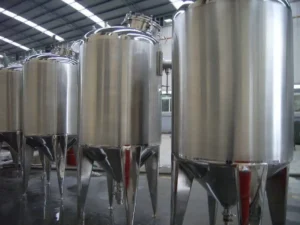
How a Glycol System Works
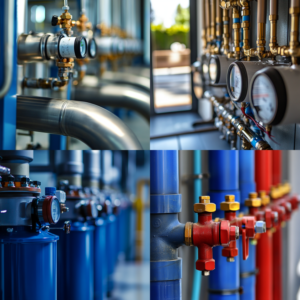
Ethylene Glycol Water: A Complete Heat Transfer Guide
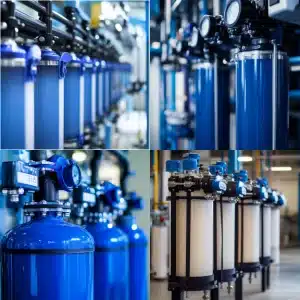
Water Filter Replacement

Why Use Stainless Steel Sheet Metal Fabrication?
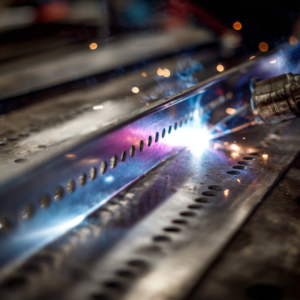
How Does Stainless Steel Sheet Metal Fabrication Work
No pillar keyword set for this post.
About Author

